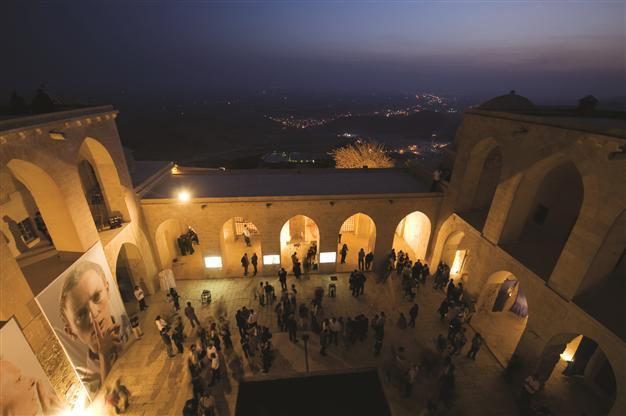Mardin Biennial gathers art in historical venues
ISTANBUL - Hürriyet Daily News

The main venue of this year’s Mardin Biennial is the Tokmakçılar Konağı, the largest mansion in Mardin, a complex whose foundations date back to the 16th century.
Curated by Paolo Colombo and Lora Sarıaslan, the 2nd Mardin Biennial will take place between Sept. 21 and Oct. 21, 2012 in the ancient city of Mardin in southeastern Turkey.
For curators Paolo Colombo and Lora Sarıaslan, the Mardin Biennial is a unique opportunity to work with people from all cultures and backgrounds in the heart of a region where history has its origins.
Confronting the past, the present, and the future, and blending today’s visual culture into the texture of this well preserved multicultural city in Turkey, the curators will graft contemporary art into the narratives and spirit of this lore-rich region. They will also explore the weight of personal histories within a wider, layered, and traditional context through the Biennial.
Deriving from the richness of the city in terms of its architectural, historical, and cultural layering, the Mardin Biennial aims to develop a framework so that it both stems from the city and also shapes the city. Creating a new path by interweaving art and urban texture, and by presenting uncommon dialogues and coincidences, the show will explore the familiar and the unfamiliar with the aim of inspiring a double take in the viewer: a recurring afterthought as to what is art and what is an everyday object, and how a thin line divides or at times connects them. The Biennial will consist of diverse venues revolving around the daily lives of Mardin citizens, ranging from historical mansions to barber shops, from “kıraathanes” (coffee houses) to open air cinemas in the city. Each venue represents different physical, psychological, historical, and cultural realms.
All venues are within a short walking distance from each other, and will house a total of 30 participating artists, including Fikret Atay, Sami Baydar, Edy Ferguson, Mona Hatoum, Seyit Battal Kurt, Marisa Maza, Pier Paolo Pasolini, Hrair Sarkissian, Shahzia Sikander, Murat Şahinler, Nasra Şimmes, Pae White and others. Some artists will introduce site-specific work that organically relates to the setting, others will present work incorporating and employing space in a contemporary manner.
The living metaphor for the Biennial will be the Mardin pigeon, a recognized and prized local breed. With its unique characteristic of doing a back flip when in flight, the Mardin pigeon is able to do a “double take” in direction and scope.
Personal historiesThe Biennial also explores the weight of personal histories within a wider, layered, and traditional context. Its goal is to enter into the life of Mardin in an unobtrusive way, not to disturb its pace or its space. It aims to integrate the artists’ works into the fabric of the town in an organic way, as if the artists’ output had always been a part of it.
Biennial venuesThe main venue of the Biennial is the Tokmakçılar Konağı, the largest mansion in Mardin, a complex whose foundations date back to the 16th century. The layers and the intricacies of this mansion mirror those of Mardin with its colorful complexities. The walls of the Konak function as a shell that houses art; left untouched, they will establish the historical and cultural context for the presentation of the works. The majority of artifacts will be displayed in free-standing vitrines, the purpose of which is to build an extensive, house-wide horizontal plane of viewing. These self-contained spaces, at the same time archives and exhibition devices, will require the viewer’s focused attention, and hopefully encourage a one-to-one reading of the artwork. The presentation is inspired by the desire to tip toe into Mardin and to shun bold, declarative statements. Ranging from video to site-specific installations, the works presented in the Konak will explore different notions of personal histories and narratives as in Anri Sala’s Byrek, in which the artist’s grandmother engages in the seemingly timeless ritual of making puff-pastry.
